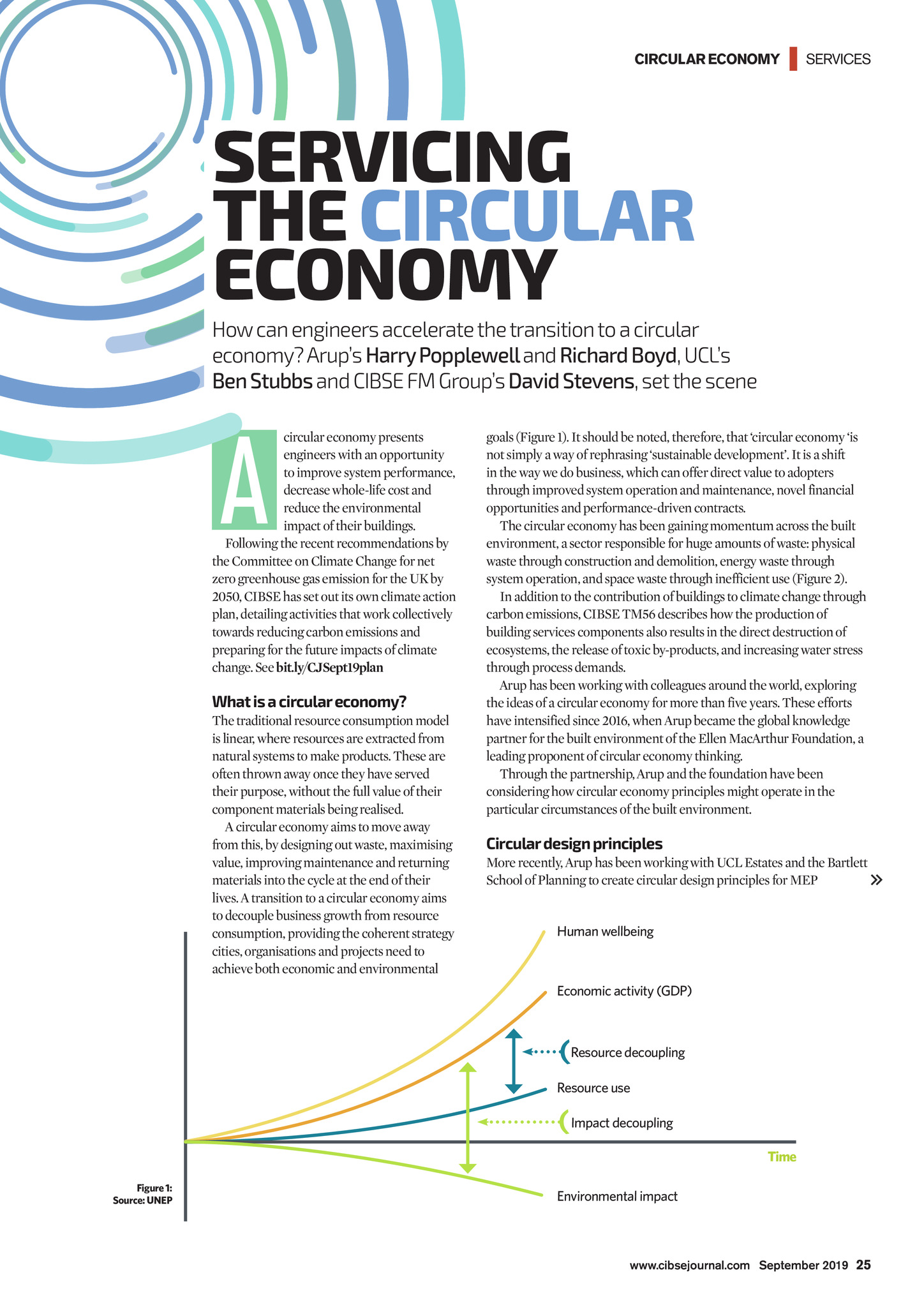


CIRCULAR ECONOMY | SERVICES SERVICING THE CIRCULAR ECONOMY How can engineers accelerate the transition to a circular economy? Arups Harry Popplewell and Richard Boyd, UCLs Ben Stubbs and CIBSE FM Groups David Stevens, set the scene A circular economy presents engineers with an opportunity to improve system performance, decrease whole-life cost and reduce the environmental impact of their buildings. Following the recent recommendations by the Committee on Climate Change for net zero greenhouse gas emission for the UK by 2050, CIBSE has set out its own climate action plan, detailing activities that work collectively towards reducing carbon emissions and preparing for the future impacts of climate change. See bit.ly/CJSept19plan What is a circular economy? The traditional resource consumption model is linear, where resources are extracted from natural systems to make products. These are often thrown away once they have served their purpose, without the full value of their component materials being realised. A circular economy aims to move away from this, by designing out waste, maximising value, improving maintenance and returning materials into the cycle at the end of their lives. A transition to a circular economy aims to decouple business growth from resource consumption, providing the coherent strategy cities, organisations and projects need to achieve both economic and environmental goals (Figure 1). It should be noted, therefore, that circular economy is not simply a way of rephrasing sustainable development. It is a shift in the way we do business, which can offer direct value to adopters through improved system operation and maintenance, novel financial opportunities and performance-driven contracts. The circular economy has been gaining momentum across the built environment, a sector responsible for huge amounts of waste: physical waste through construction and demolition, energy waste through system operation, and space waste through inefficient use (Figure 2). In addition to the contribution of buildings to climate change through carbon emissions, CIBSE TM56 describes how the production of building services components also results in the direct destruction of ecosystems, the release of toxic by-products, and increasing water stress through process demands. Arup has been working with colleagues around the world, exploring the ideas of a circular economy for more than five years. These efforts have intensified since 2016, when Arup became the global knowledge partner for the built environment of the Ellen MacArthur Foundation, a leading proponent of circular economy thinking. Through the partnership, Arup and the foundation have been considering how circular economy principles might operate in the particular circumstances of the built environment. Circular design principles More recently, Arup has been working with UCL Estates and the Bartlett School of Planning to create circular design principles for MEP Human wellbeing Economic activity (GDP) Resource decoupling Resource use Impact decoupling Time Figure 1: Source: UNEP Environmental impact www.cibsejournal.com September 2019 25 CIBSE Sep19 pp25-26 Circular Arup.indd 25 23/08/2019 15:13